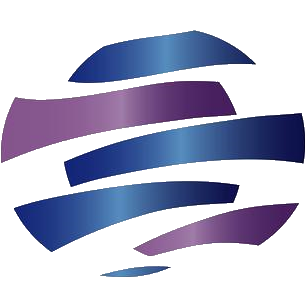 |
 |  |
| We've detected that you're using an ad content blocking browser plug-in or feature. Ads provide a critical source of revenue to the continued operation of Silicon Investor. We ask that you disable ad blocking while on Silicon Investor in the best interests of our community. If you are not using an ad blocker but are still receiving this message, make sure your browser's tracking protection is set to the 'standard' level. |

Dow Jones News Service -- August 13, 1996 YBM Magnex Intl Sees Revenue Growth 30-35%/Yr In Magnet Ops By Ben Dummett TORONTO (Dow Jones)--YBM Magnex International Inc. (T.YBM) expects annual revenue growth of 30%-35% from its main magnet business, but this rate could prove higher over time if the company's push into the U.S. market succeeds. Furthermore, the Toronto-listed concern recently secured a U.S. patent for the composition of neodymium - a material used to make iron boron magnets - that could evenutally reap YBM ''several millions of dollars'' in royalty payments, James Held, YBM's vice president of corporate development, tells Dow Jones. And it's these growth prospects that excite analysts about the company's stock. On the Toronto Stock Exchange, YBM is near its 52-week high of 6.75, trading down 0.15 at 6.60 today on volume of 13,900 shares. Mike Middleton, who covers the stock for Griffiths McBurney & Partners in Toronto, has targeted the stock to reach 8.50 over the next 12 months. First Marathon Securities Ltd. analyst Kaan Oran sets an 18-month price target of 11. YBM's core business involves making and distributing high-energy permanent magnets for use in general industrial items, computers, electrical household appliances, and an array of electronic and telecommunication equipment. The magnet business generates about 70% of the company's annual revenue, Held says. Most of the YBM's magnet business is in Europe and the Middle East, where the company is still growing, the executive says. However, ''I think we could accelerate our (30%-35%) rate of growth if we penetrate the U.S., (since) it's the largest electronics market in the world,'' Held reasons. YBM's success in Europe reflects the company's start four years ago in Hungary, where it continues to operate its manufacturing plant, Held says. YBM moved its corporate headquarters to Newton, Penn. in 1994 to focus on the U.S. market, Held says. Like in Europe and in the Middle East, YBM's strategy in the U.S. is to target niche markets, typified by customers with orders too small to attract the major magnet producers, Held says. So far, it looks like YBM Magnex International Inc.'s (T.YBM) foray into the U.S. is paying off. In the first six months of the year, U.S. revenue totalled $5 million (U.S.), already up sharply from $2.8 million for all of 1995, notes company spokesman James Held. Moreover, ''we are working on several significant contracts'' in the U.S., as well as in Mexico and Canada, he adds. Indeed, YBM is close to securing a $2 million (U.S.) contract in Canada, Held tells Dow Jones. He declines to provide specifics. YBM posted total revenue of almost $35.3 million (U.S.) in the first six months of 1996, and projects about $70 million for the entire year, sharply up from last year's $50.6 million. The $70 million projection excludes potential revenue from the company's recent acquisition of a controlling interest in Schwinn Csepel, a European bicycle manufacturer based in Hungary. Held says Schwinn Csepel will launch a line of bicycles incorporating YBM's new magnesium alloy in third quarter of next year. Held and analysts both say the Schwinn investment isn't expected to have a significant impact on the company's earnings for the foreseeable future. YBM doesn't provide earnings forecasts, but Held says he has no problem with analysts' current projections. He says the analysts' forecasts for 1996 earnings are in the range of 40 cents (U.S.) to 44 cents a share, compared with actual 1995 earnings of 31 cents a share. Mike Middleton of Griffiths McBurney & Partners sees the company posting income of 55 cents (Cdn) to 60 cents (Cdn) a fully diluted share in 1996. ''The company has beat my estimates for the last three quarters,'' notes Kaan Oran of First Marathon Securities Ltd. Kaan also expects earnings of up to 60 cents (Cdn) a share for 1996, and 75 cents (Cdn) a share for 1997. Kaan is particularly optimistic about the company's prospects in the U.S., now that it has secured its composition patent for neodymium. Some potential U.S. customers had probably held back orders, waiting for YBM to secure the patent, he says. The composition patent is the only patent for neodymium - a manufacturing material for magnets - that highlights the use of hydrogen, says Held. As a result, the patent could nullify all other neodymium patents, and possibly entitle YBM to royalty payments from other magnet manufacturers that use neodymium, the official says. To this end, YBM plans first to seek a similar composition patent in Europe, and then pursue royalty payments from users of the material, Held says. ''It could mean several millions of dollars to the company,'' says Held. He couldn't specify a potential amount. Copyright c 1996 Dow Jones & Company, Inc. All Rights Reserved. | ||||||||||||||
|
| Home | Hot | SubjectMarks | PeopleMarks | Keepers | Settings |
| Terms Of Use | Contact Us | Copyright/IP Policy | Privacy Policy | About Us | FAQ | Advertise on SI |
| © 2025 Knight Sac Media. Data provided by Twelve Data, Alpha Vantage, and CityFALCON News |


